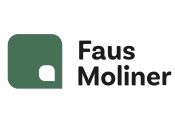Making a mistake does not necessarily mean automatic exclusion from a tender
Decision by the Central Administrative Court for Contractual Appeals of 4 December 2015, number 1108/2015
CAPSULAS Nº 166
Background
When a dossier is prepared for taking part in a public tender, it is common for many documents to be handled. Furthermore, each one must be placed in its corresponding envelope in accordance with a large number of instructions described in the specifications.
This all means that on more than one occasion, involuntary mistakes can be made and documents might be placed in one envelope when they should have been put in another.
In the decision of the Central Administrative Court for Contractual Appeals (TACRC) that we mention, a case is analysed in which an error was precisely committed in the documentation provided: some data that belonged to envelope 3 –the content of which was to be assessed via the application of formulae– was included in envelope 2, concerning criteria that had to be assessed by means of a value judgement.
Decision of the TACRC
In its decision the TACRC recognises that, in general, bidders that included information on their bids in the envelope referring to the fulfilment of previous requirements, or information that could be assessed by means of formulae in the envelope corresponding to information subject to assessment by means of a value judgement should be excluded.
However, the TACRC adds that the undue inclusion of documentation in the wrong envelope should not automatically exclude the bidder, and that for a bidder to be excluded there should have been a real, and not merely formal, damage.
Then the TACRC recalls some court decisions in which the exclusion of the bidder was declared inappropriate as it was considered that he had incurred an involuntary error without importance for third parties or that the exclusion was excessively formalistic as it had not been proven that the mistake could have influenced the assessment or breached the secrecy of the bid.
Finally, the TACRC also recalls that exclusion is justified when the undue inclusion of documentation in the wrong envelope undermines the objectiveness of the assessment and the equality of treatment.
